For the naturalist, Australia is filled with biological wonders, in large part due to its long isolation from other continents. Here, marsupials rule, and they come in a staggering array of forms.
Many usually-reliable travel guides will tell you that, while Australia has plenty of interesting creatures, it’s virtually impossible to see them outside of zoos and wildlife rehabilitation parks.
Not true.
Many wildlife species can be seen quite easily, particularly if you’re willing to walk around at night. (My friend Jon Hall’s excellent wildlife travel web site Mammal Watching is a good starting point: Jon has seen some 250 Australian mammal species and shares great information on where to spot them).
Northern Tropical Queensland, with its beautiful World Heritage rainforests, offers particularly good marsupial viewing. This area is north of the popular destination of Cairns, gateway to the Great Barrier Reef. What can you see? Of course, there are well-known critters like koalas and red kangaroos. But there are also some more unusual species worth a trip. Here are five of my favorites from a recent journey.
-
Possums
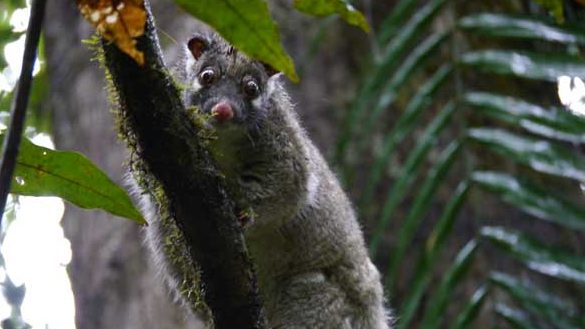
The green ringtail possum is one of several species you can spot in the Australian rainforest. Photo: Matt Miller/TNC Shine a light in enough trees in the tropical forest, and you’re sure to see one of the almost impossibly cute possums. There are some 70 species in Australia, many of them resembling something designed by a maker of plush toys.
These mammals are only distantly related to North America’s less photogenic opossum. They show remarkable diversity: One is the size of a mouse. Some have long tongues for lapping up flower nectar (and thus serve as important pollinators). The striped possum, with striking black and white coloration, has a long finger that it uses to extract caterpillars and beetles from tree bark. My favorite? The green ringtail possum, which can sometimes be seen during daylight hours.
Possums can be seen in most any forest in Tropical Queensland. The forest national parks, including Mount Hypipamee, Lake Eacham and Lake Barrine, are particularly good places to spotlight. Warrigal , a private nature reserve owned by conservationist and guide Jonathan Munro, offers incredible spotlighting for possum species. In 90 minutes, we saw 15 possums of three species, and that was a slow night.
-
Sugar Gliders
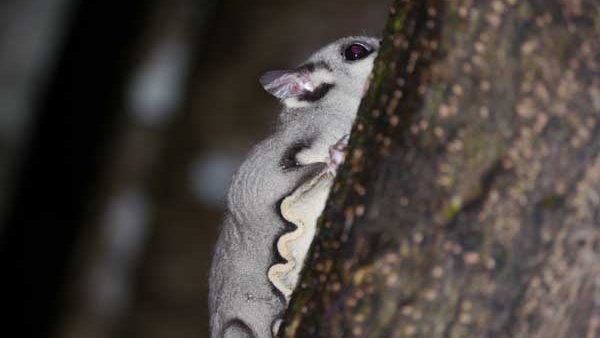
A sugar glider gives a quick glimpse as it darts around a tree. Photo: Matt Miller/TNC Gliders are actually possums that – as their name implies – glide through the air using flappy skin. This is very similar to the flying squirrels of North America; in fact, it’s a textbook case of convergent evolution.
There are several species, with the sugar glider being undoubtedly the easiest to spot, in part due to their willingness to visit feeding stations (often some sugar smeared along trees).
Chambers Rainforest Wildlife Lodge, in the heart of the tropical rainforest reserves, offers one such feeding station. You can watch these little mammals glide, scamper around and feed from a short distance. The friendly owner, John Chambers, is an expert on local wildlife and can point you to other excellent marsupial spots.
-
Bandicoots
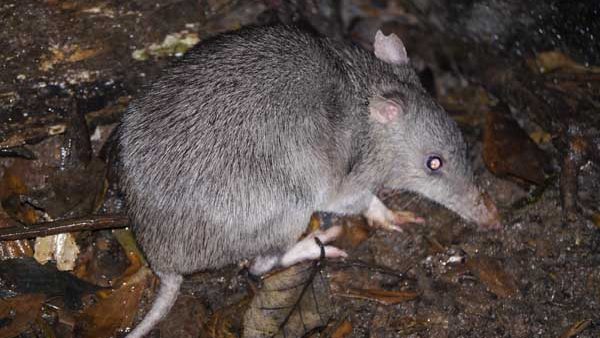
Long-nosed bandicoot digs in the forest floor. Photo: Matt Miller/TNC These pointy-nosed mammals are particularly vulnerable to invasive predators like feral cats and foxes. But you can still reliably find two species, the northern brown bandicoot and long-nosed bandicoot, in Queensland forests.
You can often hear them grunting and rooting around leaves before you see them. Bandicoots are diggers, so their pouches – where the young are carried – face backwards so they don’t get filled with dirt.
They also happen to have the shortest gestation of any mammal; young bandicoots are born just 12 days after mating.
Look (and listen) for bandicoots around bird feeding stations, gardens and even camp sites. I had some of my best views from my raised tent platform at the venerable Lions Den, a pub, restaurant and campground near Cooktown oozing character (and characters). The fact that I could enjoy excellent mammal watching, cold one in hand, was a nice bonus.
-
Rock Wallabies
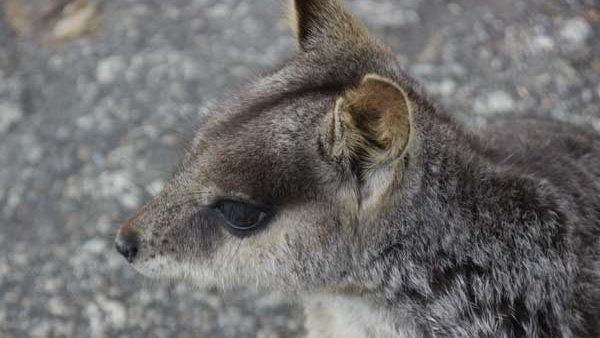
Imagine a small, incredibly agile kangaroo, and you’ve pretty much got the rock wallaby. Some are surprisingly colorful. All live in colonies in rocky areas. Several of the sixteen species are found in Queensland, with the Mareeba rock wallaby one of the easiest to find and photograph.
Granite Gorge near Mareeba is the place to go for close—very close—encounters. (Don’t be surprised to have one pawing at your pant leg). Other wallaby and kangaroo species can be found in both arid and rainforest habitats around the state. Be sure to drive carefully at dawn, dusk and night, as these animals are often right along the roadside.
-
Tree Kangaroos
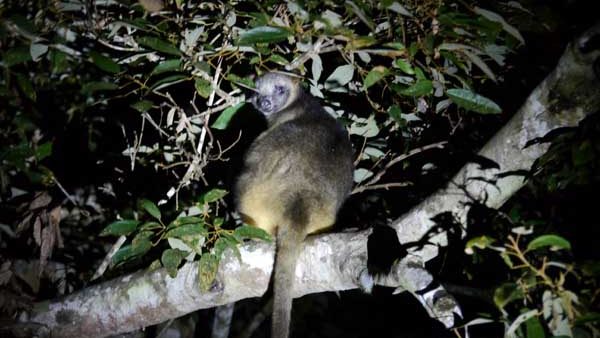
Spotlighting a Lumholtz’s tree kangaroo. Photo: Matt Miller/TNC True, at first glance, they may look more like monkeys. But they’re kangaroos. Kangaroos that live in trees. These animals have a particularly interesting evolutionary and ecological history.
Millions of years ago, a marsupial similar to possums descended from the trees and became the kangaroos, but tree kangaroos took back to the trees to exploit abundant leaves. In Queensland, two species survive in the remaining rainforest. The Lumholtz’s tree kangaroo is the easiest to find, although it may still take some searching.
Check out trees along the river near Yungaburra (which is also a great place to check out a marvelous monotreme, the platypus). The Curtain Fig Tree National Park and the forest near the Tree Kangaroo Café are other reliable spots.




I live in Cairns and there is something in the palms eating the seeds, it has a face like a possum, size of a rat and has a rat type tail, just wondering what it is.
I’m having trouble identifying a fairly large marsupial I disturbed cutting grass in my yard near( west of) Brisbane I thought it was a potoroo but it ran on four legs it didn’t hop ? It was not a bilby and it did not use its tail to balance it just ran …..It was the size of a big rabbit about 35cm quite heavy in the body( more sausage shaped … its legs were short it’s tail stubby about 7-8 cm long it did not have a very pointy face so I Did not think it was a bandicoot ? It’s coat was brownish grey like many of these types of mammals and it ran like the wind … After clearing the grasses , I noticed a series of tracks and small burrow like areas . Sadly I did not realise there was a mammal living there until I cut the grasses. We have a lot of wallabies in our yard some days but I’ve never noticed this guy before. The neighbouring property is full of red belly black snakes (which worries me sometimes for little guys like this ) and there is a lot of lantana growing there as well for small marsupials , any chance you could tell me what this was .